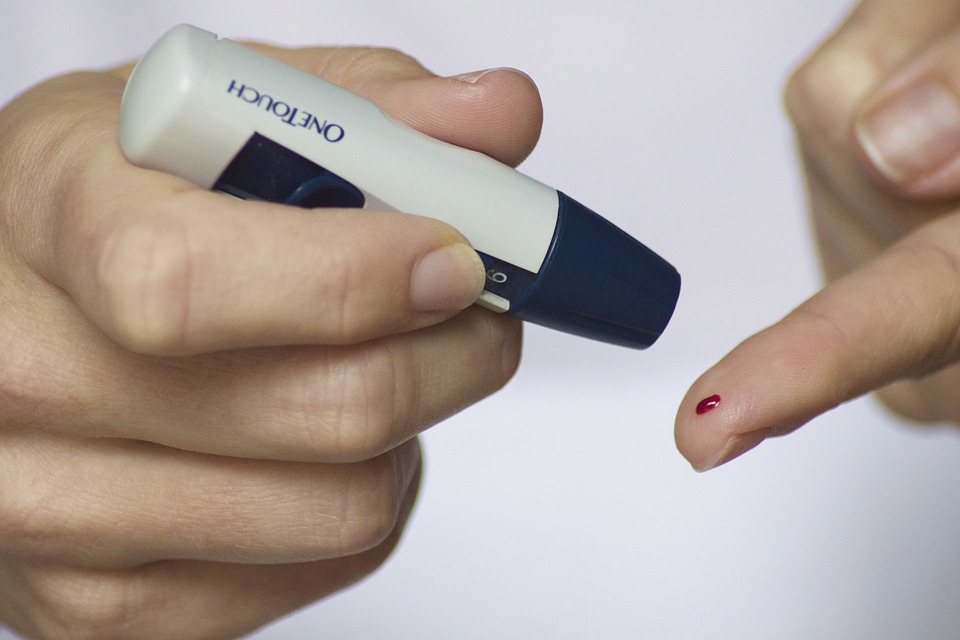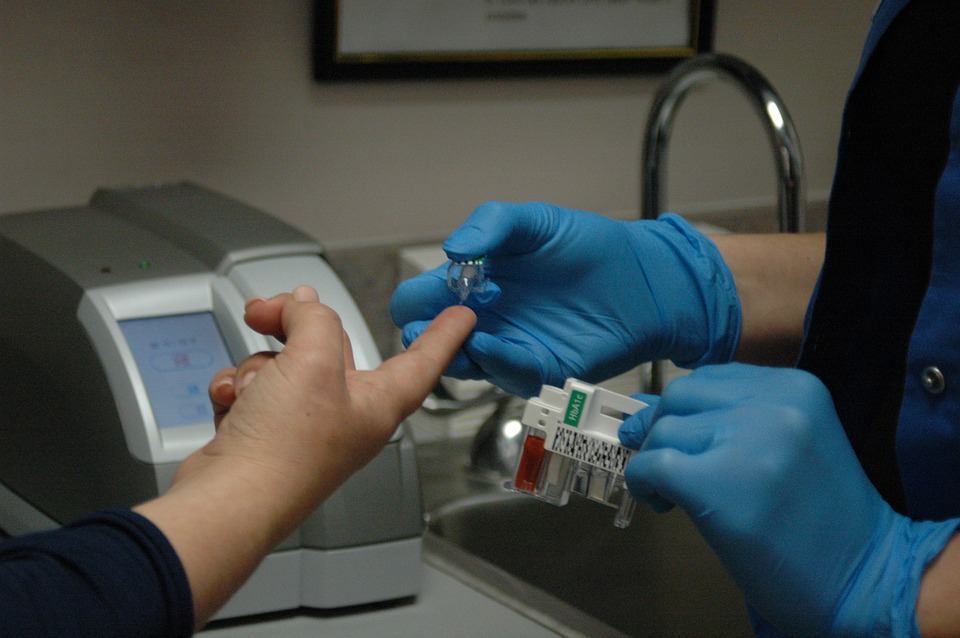What are the types of diabetes? Diabetes is still one of the most common medical syndromes that people face today. This condition has a classification of two types, there’s Type 1 diabetes and Type II diabetes. What are the types of diabetes? Type 1 is basically a syndrome in which the pancreatic cells that produce insulin are almost completely wiped out; type II is usually a dysfunction of these cells; to the point where the cells are no longer able to produce insulin that is effective in reducing glucose in the plasma.
The reasons for having type 1 diabetes are usually immune – mediated or in other words; your body’s immune system attacks the pancreas itself, and so the cells that produce insulin are no longer able to produce insulin. For type II diabetes, it is usually weight – related or genetically -related issue; people who have a family history of the diseases usually have a higher instance of diabetes which is related to type II. What are the types of diabetes? People who were diagnose with either type 1 and type II requires medication, however; with type 1 diabetes, medication starts almost immediately. Most people don’t usually see any signs of symptoms, and if ever there’s any; the symptoms are often very subtle and therefore hardly noticeable.
Type I vs. Type II

What are the types of diabetes? Type II diabetes is the most common form of the disease, affecting almost 90% of patients worldwide. This means that the body is unable to use insulin properly that is why it is also referred to as “insulin – resistant diabetes.” In the beginning the pancreas might try to hold up and extract insulin but overtime what happens is that the pancreas will be unable to produce insulin to keep the blood sugar levels normal. When these happen; the sugar then will start to build up in the blood which will lead to high blood sugar levels. It is different from type 1 diabetes because there is an absolute lack of insulin because of the damage to the cells in the pancreas which produces insulin.
There are lots of reasons or factors that contribute to type II diabetes; but more often than not the major causes are obesity and genetics; according to researchers, these are the strongest contenders of type II diabetes. The simplest way (and probably the most cliché advice) to prevent diabetes or type II diabetes for this matter is none other than leading a healthy lifestyle – that means keeping a tab on your diet; and you should regularly exercise to stay fit because it can ultimately delay and in some cases, prevent the onset of diabetes.
Type 1 diabetes is quite easy to treat and managed compared to type II; because the former only needs to be injected with insulin, but the latter is a bit different and perhaps quite complicated. Initially, physicians will recommend regular monitoring of your blood sugar levels and will encourage you to eat a healthy diet, but if that doesn’t work out; you may need to take medications, and for some people, especially those who are obese; may need to undergo a weight loss surgery. Type II diabetes is much more progressive than type 1, and if not treated properly or at an early stage; it can lead to serious complications and illnesses.
Kinds of Diabetes
What are the types of diabetes? According to some researchers, type II diabetes can be classified into four; these are type O, type I, subtype H, and subtype S.

Type O
According to studies, type O is pretty much a classic type II diabetes. Around 50 – 60% of patients are overweight and are highly insulin resistant. Most patients have off – the charts insulin levels (which means that the body is uncontrollably producing excess insulin) and usually; it is often too late once the patients found out. The symptoms are very subtle, that’s why if you are overweight; or have a family history of the disease you should test your blood sugar levels every now and then.
Type I
Type I is referred to as the “thin or mild version” of type II diabetes. Patients who were diagnosed with type II diabetes that belongs to the type I category could be underweight and have very low levels of insulin but they have high levels of glucose in their bloodstream. These patients are often diagnose specifically with Latent Autoimmune Diabetes of Adults (LADA). Type I patients should only have small frequent feeding so that their low levels of insulin can handle; and control the glucose in the bloodstream. Low carb foods and a small chunk of protein should be their ideal diet.
Subtype H
What are the types of diabetes? H stands for hormonal, patients classified under subtype H often have worn out adrenal glands and they usually have low thyroid. These patients could be slightly overweight or even have a normal weight but their bodies could get easily inflamed. Patients under subtype H may or may not be insulin resistant as well. If you fall under this category you may need carbs (although it may not work for some depending on your current condition and other factors) but since the adrenal glands cannot produce enough carbs; the patient needs to compensate for that lack through incorporating carbohydrate rich foods in their diet. Some examples are sweet potatoes or beets (best for people who can’t easily sleep).
Subtype S
S stands for stress – induced; your type II diabetes can either be caused by long – term chronic stress or one big time traumatic stress. Patients under this subcategory have, obviously; high levels of stress hormones or cortisol and adrenaline in their body which then causes an increase in blood sugar levels. If you think you are under this classification; then better eat up some carbs (but not too much though) and also limit caffeine and alcohol or any other similar stimulants. You can also try some supplements but consult your doctor first before taking any.
Another important not is that, if you fall in this subtype; exercise may not be suitable for you because once you do; your body will release cortisol which in turn would raise your sugar levels, instead of going down. However, that doesn’t mean that you should not exercise anymore! You can still do some light exercises such as yoga or tai chi to help your body combat the disease.
Possible Treatments for Diabetes

Artificial Pancreas
What are the types of diabetes? Just last year positive clinical trial results have come up for the artificial pancreas project. Artificial Pancreas is an embedded glucose sensor or an implantable glucose sensor coupled with an insulin pump, now there’s a software algorithm that helps these two devices work together in the body; but the end result is mostly passive, the only thing you have to do is to replace the battery every now and then and ensure that the device is full of insulin. If this works, it can be very helpful and transformative especially for those who have type 1 or type II diabetes.
Encapsulated Replacement Beta Cells
This procedure is essentially taking donor cells; putting them in a device and embedding it in the body wherein your immune system does not attack those cells. The goal is to normalize islet function. However, there could be limited donors for pancreatic islet cells but encapsulated beta cells may reduce immune response. It’s more or less having a “different” pancreas.
Glucose Responsive Insulin
This technology can replace frequent insulin shots per day. Glucose responsive insulin aims for the patient to just have one dose or one shot of insulin that could last you through the day; without having to carry around the needles or being constantly reminded to puncture yourself to measure your blood sugar and give yourself insulin shots.
Stem Cells
Stem cells involve the transformation of cells within your own body into cells that are capable of reproducing insulin when your blood sugar goes up. There have been various attempts in producing these technology or procedure through using embryonic cells, fetal cells and adult stem cells. Scientists have been testing all kinds of technologies in small mammals, using test tube procedures to make liver cells convert into insulin secreting cells. Lots of researchers and scientists are currently working on this innovation and in a few years you can expect to see various treatments involving living cells producing insulin for short – term or long – term use, it could be cells donated from a cell line, it could come from the patient’s own body but most likely insulin will be produce in the body through using stem cells or technology similar to it.
Nanotechnology
What are the types of diabetes? What nanotechnology can potentially do is take the cells of the pancreas, the ones that secrete insulin, and scientists place them in a tiny capsule that is nano-porous, what that means is that the capsule have extremely tiny holes, and these holes allow for insulin that is released by the cells to come out into the body but it is small enough to keep out all the things that might attack those cells. The small device square capsule that scientists are currently developing has a central reservoir that can fit millions of cells and the back of the reservoir has tiny nanopores.
Researchers already have a prototype to help illustrate their point. The small rectangles in the prototype consist of millions of nanopores. According to researchers, these nanopores resembles a tea bag that you put in a hot water, the hot water then flows to the tea bag which releases the tea molecules that are contained in that netting. It’s almost the same with the nano capsule but the difference is that there is (blood) sugar that comes into the capsule, and it alerts the cells inside to secrete insulin. According to these scientists, the real benefit of nanotechnology is creating small pores that can only allow insulin to go out but does not allow large immune cells or antibodies to come in.
How You Can Manage Diabetes

The key to managing diabetes and living a long, healthy and happy life lies on the choices you make each day. You may not be able to control variables like your age, your genes or the diseases you inherit from your family but you can still live a normal and healthy life if you will it! If you have diabetes, your physician will recommend you to take medications and regularly monitor your blood sugar levels every single day; however, you also need to always check your cholesterol levels as well as blood pressure to prevent potential health problems in the future. Here are some tips on how to manage diabetes:
Know Your Diabetic Status
This is a must but don’t let your condition get in your head way too much. Don’t be obsessed with the numbers, just be responsible on your stats and focus on getting better. If your doctor recommends you to take the hemoglobin A1C test, don’t be afraid and take it, how can you successfully defeat the enemy if you don’t know where you stand? These tests will help you plan the things you need to do to achieve your goal of controlling your diabetes. The usual A1C test goal for diabetics is 7% below; the goal when it comes to blood pressure is 140/90 mm Hg. Take control of your cholesterol and ask your physician on how to eliminate bad cholesterol so that it won’t clog up your blood vessels which could lead to various heart conditions.
Diabetic Meal Plan
The importance of good nutrition is very much emphasized in this book and I’m sure your doctor also recommends the same advice. You need to stop eating junk and start eating balanced diet that includes fruits, veggies, whole grains, chicken (without the skin), lean meat, fish, cheese, and low – fat milk. As much as possible avoid or completely stop drinking sweetened beverages and choose foods that are low in trans-fat, calories, saturated fat, sugar and salt.
Physical Activities
Swimming and brisk walking are good exercises for diabetic patients, you don’t really need to do extreme exercises or excessive workouts, just make sure to not sit around all day and keep moving. You can ask your physicians on the best exercise you can do because it also depends on your age, risk factors and other conditions. You can also create a workout plan that’ll go hand in hand with your diabetes meal plan.
In Summary
What are the types of diabetes? Diabetes is a disease that can affect one’s life negatively in the long run. It’s a progressive condition that can also lead to other complications and fatality. However, for some people they learned how to manage and deal with this common illness and not let the disease stop them from living a great and purposeful life. Just look at these Hollywood Celebs, even diabetes didn’t stop them!


 I love to write medical education books. My books are written for everyone in an easy to read and understandable style.
I love to write medical education books. My books are written for everyone in an easy to read and understandable style.